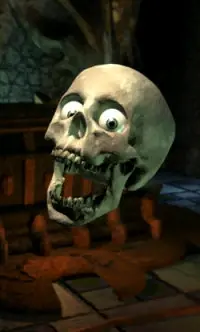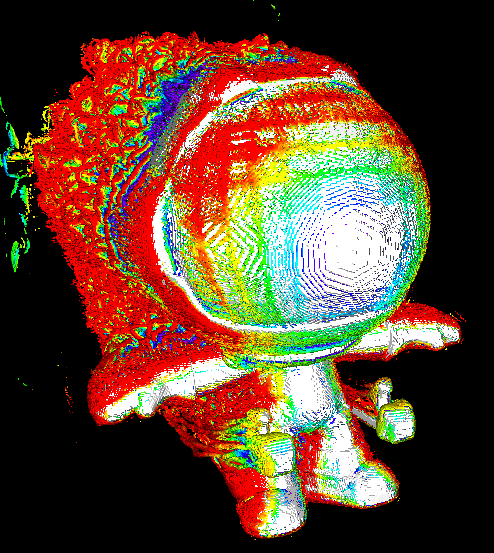Edit 2: I purchased the Bambu A1 mini. If I regret it, there will be more chances in later years. Haha. Maybe by then I can work with resin and make the really fun minis. Thank everyone who responded for your advice and help.
Edit: I am leaning against resin printing due to the lack of sufficient ventilation in my current work space and the potential for injuring my cats. I also do not plan to do exclusively miniatures; they were just the thing I was most excited for when making this post.
I looked around for a pinned thread or purchase wiki type thing, but didn’t see one. I apologize if this is the wrong place.
After visiting a family member, I have decided that 3D printing has finally gotten affordable enough for me to maybe add to my list of hobbies. My primary use cases would be making miniatures (no particular scale necessary, as I just like to paint them at the moment), making parts for other hobbies (including cross stitch), and just generally making gifts and fun knick nacks. My budget is no more than $250 for the machine itself. I have not-insignificant computer experience, and some training in CAD programs.
Several seem to be on sale in the US for Father’s Day (today), and I was wondering if anybody had some advice or suggestions on some specific ones.
- Creality Ender-3 V2 is what my family member has had for a while now and enjoyed, and less than $200 is very nice. It does seem to be dated at this point, and Creality support seems to be lacking.
- There’s also the Neo of the above for the same price, but I am honestly having a hard time pinpointing the difference.
- Sovol SV06 seems to be a common recommendation for the price range, but I’ve heard similarly negative things about their support, especially on Amazon (although I no longer trust Amazon reviews very much).
- Flashforge Adventurer 5M appears to be on a significant sale on their official eBay (240 USD), but I have only really seen it recommended in almost spammy manners, which seems like either excitement for the sale or an ad campaign.
Any help you can give is greatly appreciated, even if it’s just not getting into the hobby at this price point.
If you want to print miniatures that are actually miniature in scale, a resin printer is probably the way to go. That said, you need to wash prints, cure prints, properly dispose of waste materials, etc. This article talks about their differences and shows somr a/b comparisons halfway through it. You can get pretty good detail with a small nozzle on a FDM printer, but resin will still blow it away.
As for a budget printer, most are generally pretty reliable but if you want good results you’re probably going to need to fiddle with them. You’ll also probably need to fiddle with them to keep them running and/or optimized (for example, better fan shrounds for your hot end, etc). I didn’t mind somewhat ugly prints from my i3 Plus, so I didn’t need to do very much fiddling beyond some basic mods over the 5 or so years I was fairly actively using it - especially after I replaced the bed springs with silicone and printed snug fitting thumb wheels.
There’s nothing wrong with an “old” printer. I bought a Monoprice branded Wanhao Duplicator i3 Plus a little over 7 years ato and from a pure feature perspective it’s not that different than the base Ender v3. The biggest advances are in quality of life things, like z-offset calibration and “auto leveling”, but it’s worth saying that most budget printers can’t adjust their extruder mechanically to be in plane with the build plate like say a Voron, so they compensate by tweaking z-height as the extruder moves between high and low spots. Geared reduced extruders on direct drive setups are also preferable over driving the extruder directly from a stepper motor like my old i3 Plus or early Ender v3 models.
Printers are generally very modifiable, so if some new whiz-bang feature comes out in a few years you’ll likely be e able to adopt it to your printer.
The results from resin printers look fantastic. My only work area is inside with cats, so I’m concerned about ventilation and contamination (especially since shutting them out of the room will reduce ventilation further). Also, miniatures are just one of the things I wanted to make. Planters, cross stitch hoops and tools, and those neat sectional fidget toys are all things I plan to make, and it seems resin isn’t ideal for those. I don’t mind sanding the result to make it smoother, and I understand the results won’t be as high detail as a purchased miniature when I do make them.
I have not yet learned much about stepper motors vs other options, but otherwise it sounds like the main thing that has changed in this price range is an increased number of valid options in it.
I have done this with both, and honestly, the resin miniatures, while impressive, are a fuckload of work to remove the supports from, clean, cure, and dispose of the uncured resin and prep for the next plate. The hazard they present isn’t terribly noticeable until it is. Ventilation is probably necessary for all 3D printers, but unless you have outdoor or purpose built external venting, resin will bother you eventually.
As for FDM, you can do it, but it will never reach resin detail. On a 0.2mm nozzle, for instance it would clog too much, or print too slow and something would end up interfering with the print. A 0.4mm does alright, but you’ll want to do some abrasive finishing and some thicker layers of primer.
It also depends on your plastic, how much you are willing to tweak your printer, etc. unfortunately, unlike resin, once you dial in the settings you will have to monitor it as the plastic absorbs moisture, the extruder and other gears wear down ever so slightly. Ambient temperature will affect how well layers stick, and slight breezes will be noticable.
Creality has never had anything decent for support for their Printers.
The support comes from the community., and third party retailers
Ender 3 is a very competent platform, and capable of printing a lot of stuff from large functional prints down to wargaming miniatures (I have a Ender 3 Pro thats fairly modded, and I’ve printed stuff from both extremes of the scale), If you are going to be printing a variety of things then I think its a solid buy for you, but you will have to deal with figuring out the right nozzle size, slicer settings, model position and supports for it, to get smaller prints to come out well (Remember, FDMs best detail resolution is on the left/right/front/back, it doesnt have as much detail in the up and down, so you have to position detailed models accordingly). And even at the finest details you might have layer lines that show up once you throw paint on, but they typically only really stand out if you hold it up right to your face… On a wargaming table, for example, no one would most likely ever notice.
If your prints are mostly going to be small, and detail oriented, then I would suggest a Resin printer if you can swing it. It will give you significantly higher detail, and if you print multiple at once, save a lot of time as well. Cause with resin, it doesnt matter if you are printing one or a dozen at once, it still the same speed as one. Unlike FDM.
as a last piece of advice… A good 3d printer is expensive. Whether you pay that price up front in cash, Or you pay it in time tinkering and experimenting, Is up to you. Ender 3 is cheap cash wise, but You’ll spend some time tinkering, and dialing, to get the best out of it.
I looked into resin briefly, but I don’t think my work area would be able to be ventilated enough for it to be safe from what I have seen.
I don’t mind tinkering, as long as I can find the info to help do so somewhere.
Fair, you do need some basic safety gear in addition to being able to exhaust it out a window, namely gloves, goggles and maybe a respirator, which might blow your budget if you dont already have any of that (and anything gloves/goggles used for resin should stay with the resin printer to avoid cross contamination).
But I did want to mention it since your main example is Minis, which is very detail oriented.
I have a Sovol SV07 Plus, that is the newer version of the SV06 Plus… or in other words, the mechanically identical, but larger, SV06. It’s easy to assemble, it’s bigger than the A1 Mini. Now, you don’t know how big your printer needs to be, until you find out that it’s too small! I found that the 22cm square offered by my old Ender 3 was enough for most things, but it wasn’t enough for everything. I also had a 12cm square with a Monoprice Select Mini Plus V2(the name was the biggest thing lol) and that was quick to become restrictive. Would I suggest the A1 Mini, that has halfway between the two? I don’t know. But at the same time it comes pre assembled (it might not be a concern for you) and easy to use. In short I would recommend the SV07 as that’s the small and less expensive version of what I have, but the SV06 should be mechanically identical so that gives me hope it’ll perform equally well. The downsides are a less than stellar control unit (the hardware inside the touchscreen), a weird as fuck cooling fan that is super loud, and instructions that trick you into believing that the packets of screws are numbered in a meaningful way. Don’t. That said it prints everything with ease, it’s really fast and that fan might be loud, but at the same time works wonders. I love it. Oh! Also. Once I ever so slightly fucked up the Z offset, making it scrape quite thoroughly the build surface: nothing got damaged, build surface included!
The A1 mini is $200 right now (you have to manually choose NOT to do the AMS bundle on the site though that’s also worth considering at $350 for a multi-color/material printer). It’s an extremely good printer for the size, and the 0.2mm nozzle and the correct settings will do minis very well.
Check out this video on doing minis with it: https://youtu.be/gw2BuLw9hNE?si=c8HQmq0URGU6-qZc
That’s exactly what I got, and it has worked really well so far. I haven’t tried printing any minis yet (although I was thinking of trying one of FatDragon’s next weekend), so thank you for the link.
My 0.2mm head is in the mail.
Most of what I have printed with
itthe 0.2 mm nozzle is filament swatches with detailed info “engraved” into them. I tried to do a larger detailed piece with it, but the model wasn’t print-ready and I made thin spaghetti instead.
Do not get a base ender 3. Get something direct drive with input shaping and auto bed leveling if you can. If you want a printer that “just works” where (after some setup) you can just press a button and get a print, auto bed leveling is a must-have IMO. I don’t have one myself, but I think the neptune 4 for ~$220 is a good option, anything else with similar specs would also work. Look at some reviews on youtube.




